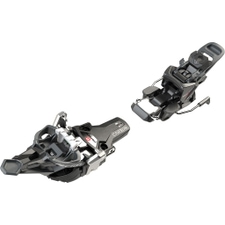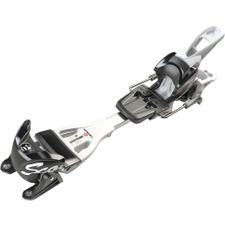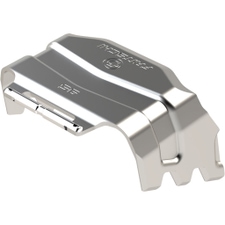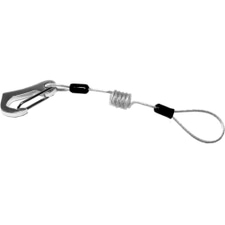Safety with Fritschi bindings
Reliable release
What is behind a reliable release? When choosing a binding, it is important to bear in mind that the boot, binding and ski form a system that only functions optimally if all components are coordinated with each other. The binding should release the boot not only in the event of a fall, but also in the event of high forces such as heavy snow or hidden obstacles. At the same time, it should not release too early during a short impact. It is important that the boot is released in time even in the event of a forward fall, thus preventing injuries to the chest and face. Fritschi integrates state-of-the-art technologies into all bindings, which guarantee reliable release in every skiing situation. The need-oriented additional functions almost reach the safety standard of alpine bindings.
Basic functions
Separate and infinitely variable adjustment of sideways and frontal release. With a frontal release, considerably higher forces act than with a sideways release. The prerequisite for the release at the set values are separate mechanisms with appropriately designed springs, which can also be adjusted steplessly.- With the Xenic, the sideways and frontal release is carried out according to the concept of pin bindings in the heel unit. This is unique in this weight class with a separate release system.
- Analogous to the concept of alpine bindings, the Tecton and the Vipec Evo are released sideways at the front and frontally at the back.
Reliable release in every skiing situation
The ski flexes during the descent. During flexing, the distance between the front and heel unit shortens and the boot becomes trapped. Sufficient elasticity for the ski keeps the resulting pressure on the system constant even during heavy deflection and ensures defined release in every skiing situation.
- With all Fritschi binding models, the optimal length compensation of 10 mm ensures release at the set values regardless of the deflection of the ski.
Timely release of the boot during forward camber
With pin bindings, the boot tilts forward after release during a frontal fall, but is still held in the front unit. Only when the nose of the shoe presses on the release lever does the system definitely release the shoe at the front as well. Early release of the boot prevents injuries in the chest and face area.
- With all Fritschi binding models, the boot is released via the "Release Lever" from an angle of 65°, depending on the geometry of the boot nose.
Secure hold without blocking
In practice, pin bindings are always blocked on the descent to prevent unintentional releases. Because the binding can no longer be released, avoidable injuries occur.
- Fritschi pin bindings absorb the vertically acting forces during the downhill
vertical forces during the descent and do not need to be blocked for a secure hold.
- The pin levers of the front unit of the Xenic move horizontally.
- On the Vipec Evo and Tecton, the boot is held between the pin levers.
Important additional functions
Prevention of unintentional releases
The fact that a binding only releases when it has to depends on the elasticity of the release with the longest possible dynamic paths for the boot. The longer the distance the shoe has to travel before it is released when the set forces are applied, the lower the risk of unintentional release.
- The long dynamic path of 13 mm for the toe of the shoe prevents unintentional releases in the Tecton and the Vipec Evo. Lateral impacts are efficiently absorbed.
Emergency release in the ascent
In standard pin bindings with side and front release at the rear, the clamping systems in the front unit are blocked to ensure lateral stability in the ascent.
- The holding system of the Vipec Evo and the Tecton allows a lateral release in case of too much force even during the ascent.
Frontal release analogous to alpine bindings
With a pin-heel unit, the pins slide over the short holding edge of the insert during a release. The jerky movement creates high tensile forces on the leg.
- With the Tecton, an Alpine heel clamp with 9 mm elasticity compensates for the forces acting and prevents unintentional releases.
Checking the set DIN values
The set values of pin bindings can always be checked on a binding tester. tester. In the terrain, the dynamics with the differently flexing ski are added. Therefore results are only meaningful if there is sufficient length compensation for the ski to absorb the pressure on the system. the system remains constant even with strong deflection.
- - 27 %
 FritschiTecton 13 incl. Stoppers Alpine Touring Bindings Black/ AnthraciteMSRP 599,95 €439,00 €Available Sizes:90100110120
FritschiTecton 13 incl. Stoppers Alpine Touring Bindings Black/ AnthraciteMSRP 599,95 €439,00 €Available Sizes:90100110120
- - 33 %
 FritschiVipec EVO 12 Rental w/o Stoppers Alpine Touring Bindings Linden Green / Purple Red / BlackMSRP 669,95 €449,00 €One size
FritschiVipec EVO 12 Rental w/o Stoppers Alpine Touring Bindings Linden Green / Purple Red / BlackMSRP 669,95 €449,00 €One size
- - 23 %
 FritschiScout 11 inkl. 90 mm Stoppers Alpine Touring Bindings BlackMSRP 349,95 €269,00 €Available Sizes:SMXL
FritschiScout 11 inkl. 90 mm Stoppers Alpine Touring Bindings BlackMSRP 349,95 €269,00 €Available Sizes:SMXL
 FritschiXenic Crampons Metallic74,95 €Available Sizes:8595105
FritschiXenic Crampons Metallic74,95 €Available Sizes:8595105
 FritschiTraxion Leashes Metallic - Black26,95 €One size
FritschiTraxion Leashes Metallic - Black26,95 €One size


Tecton 13
Alpine off-road performance
At the rear, where the greatest forces are at work, the Tecton remains as stable and precise as an Alpine binding. The hold-down system with a non-rotating alpine heel clamp and rail transfers the force directly from the boot to the ski without any loss. The Tecton not only achieves the performance but also the safety of alpine bindings. It prevents unwanted releases with long dynamic travel and releases reliably at set forces. The easy entry and intuitive operation provide a high level of safety, especially in difficult terrain. › Alpine heel with Power Rail › Elasticity of 13 mm - Releasing only if necessary › Front release at the heel with 9 mm elasticity Front release with dynamic response › Solid stop in front to step in - Easy step-in DIN 5-13 Weight 550 g / without stopper Stopper width 90 / 100 / 110 / 120
Skistopper accessories 80 / 90 / 100 / 110 / 120 Weight / Unit 80 g Ski width >70 mm

Vipec Evo 12
Simple and safe
The easy access and the extremely practical operation of all functions provide a lot of safety, especially in difficult terrain. It prevents unintentional releases with long dynamic paths and releases reliably at set forces. At the rear, where the greatest forces act during the descent, the Vipec Evo remains as stiff as an alpine binding. The skis can be guided precisely and safely even under difficult conditions and on hard surfaces.
› Lateral release with DIN-setting at the toe - In front, same as in alpine bindings
› Emergency release when climbing - Solid support while climbing and safety in an emergency
› Solid stop in front to step in - Easy step-in
› Solid, non-turning heel - Precise and safe control of skis
DIN 4-12
weight 550 g / without stopper
Stopper width in mm 80 / 90 / 100 / 110 /
Skistopper accessories 80 / 90 / 100 / 110 / 120
Weight / unit 80 g
Ski width >70 mm

Xenic 10
New lightness on the ski tour
Its light weight, easy entry and practical operation make the Xenic an extremely agile companion on ski tours in any terrain. During the descent, the high elasticity for the ski ensures reliable release via a length compensation of 10 mm at set forces. The innovative front unit provides secure support at the front, and at the rear the extremely wide support of the heel ensures easy guidance of the ski.
› Fixed stop and broad step-in pedal for easy step-in
› Sophisticated technology for easy operation without compromise
› Infinitely adjustable plus 10 mm length compensation for a defined release
› Innovative frontal unit for a secure hold in downhill skiing without blocking
› Exceptionally broad support of the heel unit for direct power transmission
DIN 4-10
Weight 280 g / without stopper
Skistopper accessories 85 / 95 / 105
Weight / Unit 45 g
Ski width >70 mm

Scout 11
The lightest alternative to pin binding
The Scout 11 is almost as light as the heaviest pin binding and offers outstanding all-mountain performance and the easy handling of an alpine binding. The Compact Module is also the hub for all other functions from walking comfort and ease of use to safety and the excellent downhill characteristics, and is not least the reason for the light weight of this bar construction. The activatable crampon is another technological refinement of the system.
› Extremely light frame binding
› Simplest handling with easy stepping in and out
› Outstanding walking comfort
› Wide-ranging hinge and heel support for direct power transmission
› Activatable crampon
DIN 3-11
Weight 790 g / without stopper
Stopper width in mm 80 / 90
Skistopper Accessories 80 / 90 / 100 / 115
Weight / Unit 100 g
Ski width >67 mm
Sizes: > SM 260 – 315 mm
> ML 285 – 340 mm
> XL 330 – 370 mm
